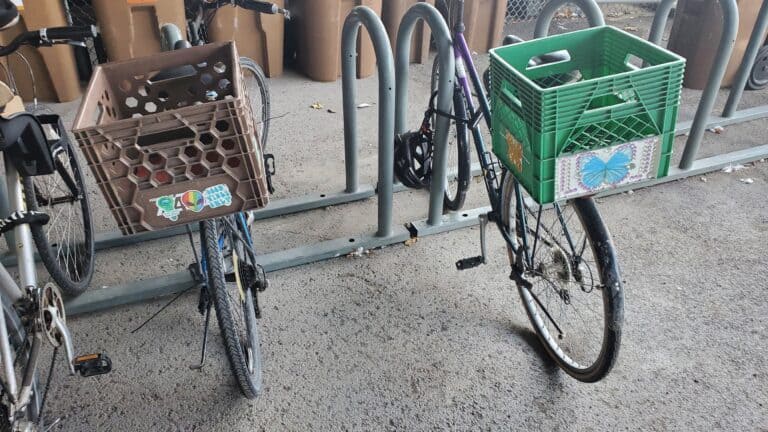10 Tips for Eco-friendly Grocery Shopping
In this article, we will provide you with 10 practical tips for eco-friendly grocery shopping.
What does eco-friendly grocery shopping mean?
Eco-friendly grocery shopping is all about making sustainable choices to reduce our environmental impact.
It goes beyond just buying organic or locally sourced products; it involves a comprehensive approach to shopping that considers the entire lifecycle of the products we consume.
1. Avoid single-use plastic items
To reduce our environmental impact, avoid single-use plastics like bags, straws, and bottles.
Instead, use reusable alternatives like reusable bags and stainless steel or bamboo straws.
| Single-Use Plastics | Environmental Impact | Reusable Alternatives |
| Plastic bags | Contribute to plastic pollution in landfills and oceans | Reusable cloth bags, tote bags |
| Straws | Pollute oceans and natural habitats | Reusable stainless steel or bamboo straws |
| Water bottles | End up in landfills and contribute to plastic waste | Reusable water bottles, filled with tap water |
2. Choose or Bring Reusable Shopping Bags
Plastic bags are harmful to the environment due to their production and non-biodegradable nature.
You can combat their negative effects by advocating for reusable bags made from sustainable materials like cotton, jute, or recycled plastic. Switching to reusable bags is a small yet impactful step towards a more sustainable future.
3. Shop Locally and Seasonally
Supporting local farmers and buying seasonal produce reduces transportation emissions and contributes to the fight against climate change.
Visit farmers’ markets or join a CSA program to learn about your food, develop relationships with farmers, and enjoy fresh produce at its peak. Make a conscious choice for a more sustainable food system.
4. Plan Meal to Reduce Food Waste
Food waste has a detrimental impact on the environment, wasting resources like water, energy, and land. It also releases methane, a potent greenhouse gas, when it decomposes in landfills.
To combat food waste, incorporate practical tips into your grocery shopping routine. Meal planning ensures you only buy what you need and use ingredients efficiently.
Proper storage, like refrigerating perishables and using airtight containers, extends shelf life and reduces waste.
Composting food scraps creates nutrient-rich soil and contributes to the circular economy.
5. Choose Bulk Foods and Refillable Containers
Buying in bulk and using refillable containers offer several advantages for eco-friendly grocery shopping.
Firstly, it allows you to purchase larger quantities of products, reducing the need for excessive packaging and significantly reducing waste. It also helps save money as products are often cheaper when purchased in larger quantities.
Many grocery stores, such as Whole Foods Market, Bulk Barn and Sprouts Farmers Market, offer bulk bins for items like grains, nuts, and spices.
By buying in bulk and using refillable containers, you can eliminate the need for unnecessary packaging, reduce waste, conserve resources, and reduce the carbon footprint associated with packaging production and disposal.
6. Opt for Eco-Friendly Packaging
Excessive packaging has a significant environmental impact, depleting natural resources, increasing energy consumption, and generating excessive waste.
The production, transportation, and disposal of packaging materials contribute to deforestation, greenhouse gas emissions, and pollution.
To reduce this impact, choose products with minimal or recyclable packaging, shop at package-free stores or those with bulk bins, and bring your own containers.
These small changes can make a big difference in creating a more sustainable future.
7. Use Eco-Friendly Cleaning Products
To minimize the environmental impact of cleaning products, choose eco-friendly alternatives like homemade cleaners made from natural ingredients such as vinegar, baking soda, and lemon juice.
These cost-effective options reduce the need for single-use plastic packaging. Certified green cleaning products are another option, made from plant-based ingredients and free from harmful chemicals.
They often come in recyclable or biodegradable packaging, further reducing their environmental impact.
8. Consider Plant-Based and Organic Choices
Plant-based diets have gained attention for their environmental benefits.
By choosing plant-based foods and reducing animal product consumption, individuals can reduce their carbon footprint and water usage.
Additionally, choosing organic, pesticide-free products supports biodiversity and soil health, promoting sustainable agriculture.
9. Reduce Meat and Dairy Consumption
Meat and dairy production have a significant environmental impact.
The livestock industry contributes to greenhouse gas emissions, deforestation, water pollution, and biodiversity loss.
According to the FAO, it accounts for about 14.5% of global greenhouse gas emissions.
Consider plant-based alternatives to reduce the ecological footprint. Plant-based diets have a lower carbon footprint and adopting them or reducing meat and dairy consumption can contribute to a sustainable food system.
Start with “meatless Mondays” – going without meat for one day a week – to explore plant-based meals. Gradually reducing meat intake is also impactful.
Every small change in dietary choices can combat climate change, preserve resources, and promote a sustainable future. Choose plant-based alternatives to make a difference.
10. Support Eco-Friendly Brands
Support brands with sustainable practices to drive change and promote sustainability.
By purchasing from these companies, we send a clear message that we value sustainability and expect businesses to do the same.
Look for certifications like B Corp, USDA Organic, and Forest Stewardship Council to identify eco-friendly products.
Online databases and apps like Good On You and Environmental Working Group provide information on sustainable brands.
Each purchase is an opportunity to vote for a more sustainable future and contribute to a greener world.
Conclusion
By taking these actions, we can create a more sustainable future and protect our planet for future generations.




